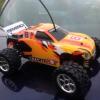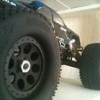TrackStar ROAR motors on 3S?
-
Recently Browsing 0 members
- No registered users viewing this page.
-
Latest Posts
-
- 32 replies
- 3,699 views
-
- 0 replies
- 14 views
-
- 17 replies
- 342 views
-
- 23,062 replies
- 989,311 views
-
- 4 replies
- 82 views
-






Recommended Posts
Join the conversation
You can post now and register later. If you have an account, sign in now to post with your account.